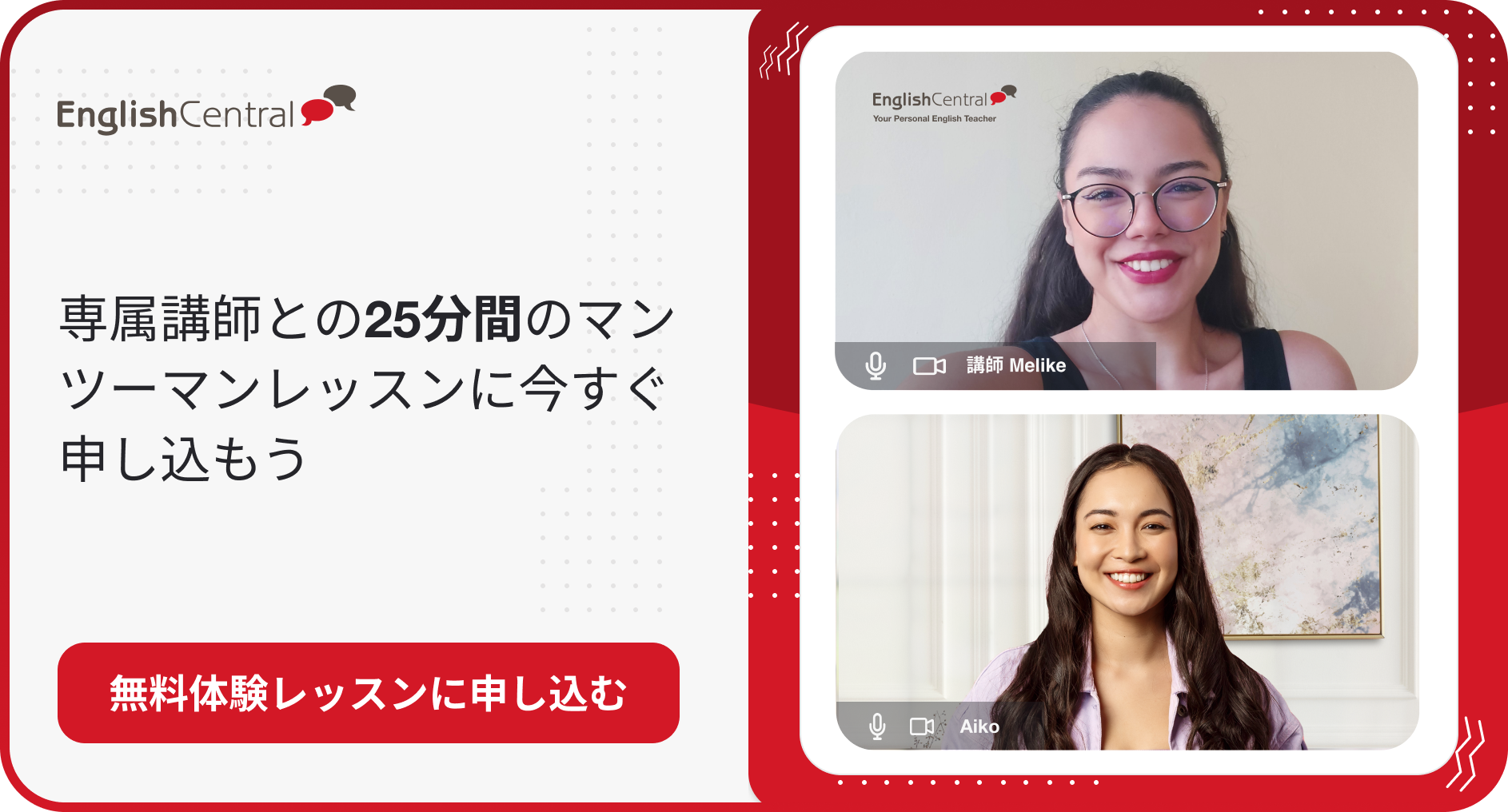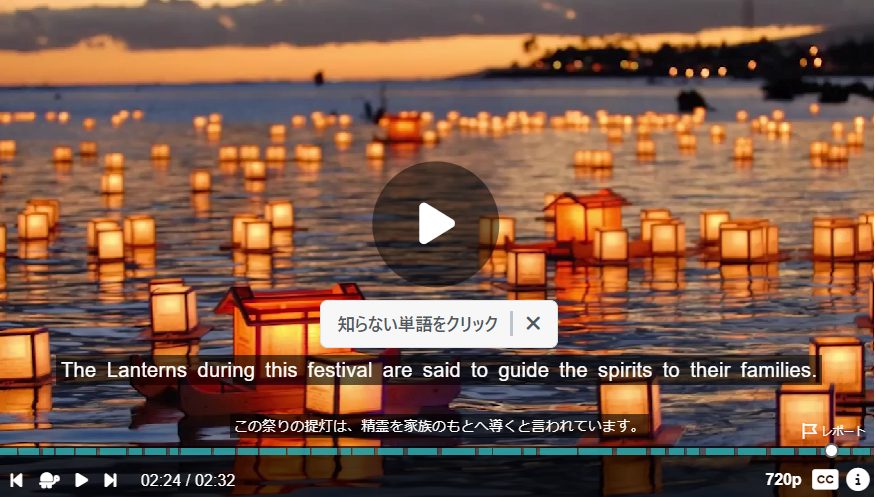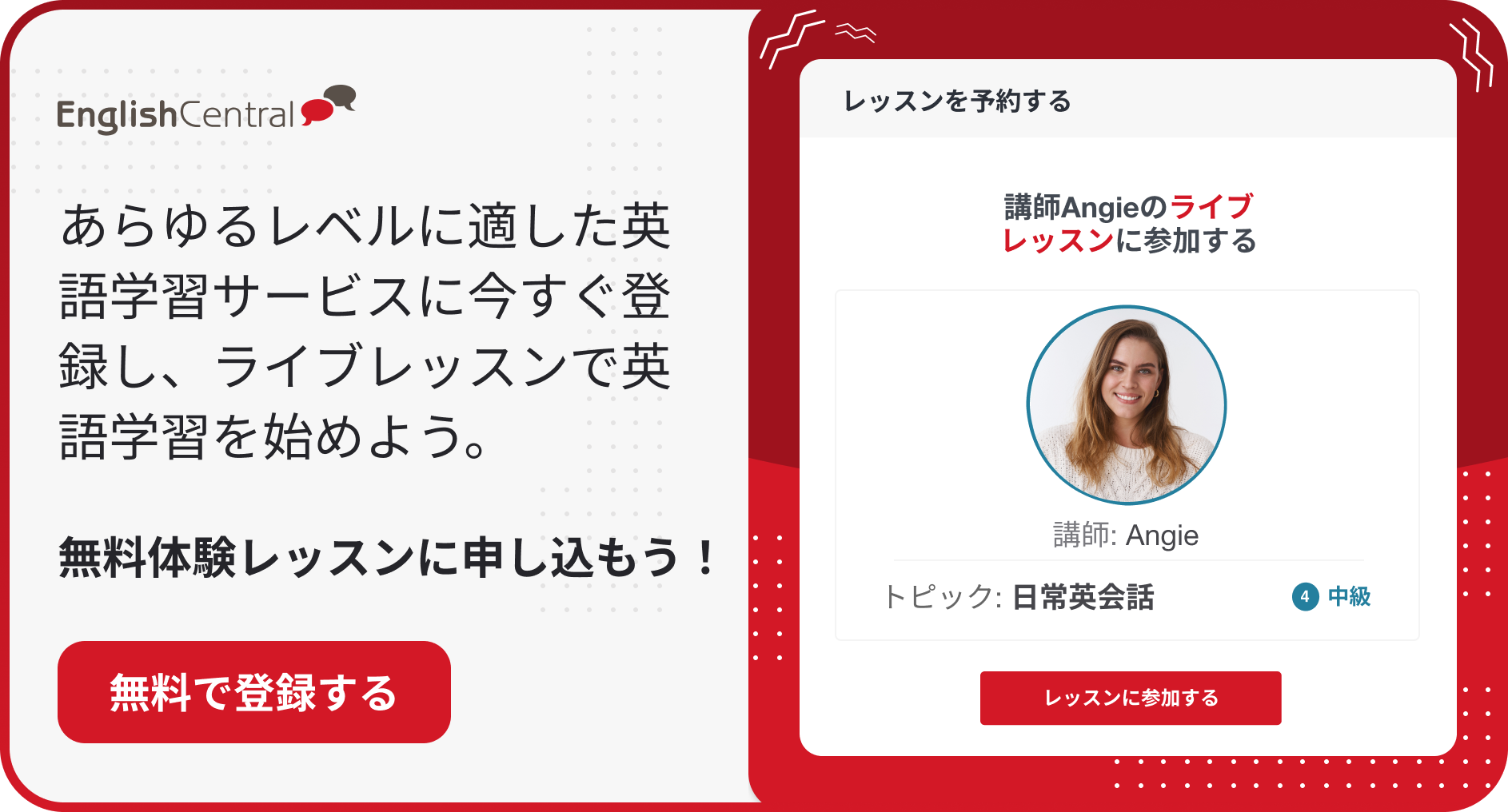この記事で学習する内容を練習してみませんか?EnglishCentralは全世界で800万人が利用!動画を活用した英会話レッスンをもっと手軽に。ChatGPTと提携したAI機能を駆使して、あなたの英語総合力を鍛えます。無料登録後、20,000本の動画見放題。そして、オンライン英会話レッスン1回無料。こちらから。
そもそも日本の夏の風物詩、って英語で何て言う?
日本の夏の風物詩を英語で表現する際、一般的に “Summer traditions in Japan” や “Japanese summer customs” と言います。より詳しく説明したい場合は、”Typical sights and experiences of Japanese summer” と言うこともできます。
例文:
“There are many unique summer traditions in Japan that you can enjoy.”
(日本には楽しめるユニークな夏の伝統がたくさんあります。)
それでは、具体的な夏の風物詩を見ていきましょう。
かき氷
「かき氷」は英語で「shaved ice」または「kakigori」と言います。
例文:
1. In summer, Japanese people enjoy eating kakigori, a type of shaved ice flavored with syrup.
2. Kakigori, or shaved ice, is a popular treat during the hot Japanese summer.
3. You can find kakigori stands at many summer festivals in Japan.
花火大会
「花火大会」は英語で「fireworks festival」と言います。
例文:
1. The fireworks festival is a popular event in Japan during the summer.
2. Many people gather to watch the beautiful displays at fireworks festivals.
3. Fireworks festivals are held in various locations throughout Japan in summer.
夏祭り / 盆踊り
「夏祭り」は英語で「summer festival」、「盆踊り」は「Bon dance」と言います。
例文:
1. Many towns hold summer festivals where people participate in Bon dances.
2. Summer festivals are a great way to experience traditional Japanese culture.
3. At Bon dances, people wear yukata and dance to traditional music.
スイカ割り
「スイカ割り」は英語で「watermelon splitting」と言います。
例文:
1. Watermelon splitting is a fun summer activity often enjoyed at the beach.
2. Children and adults alike love participating in watermelon splitting games.
3. Watermelon splitting is a traditional Japanese summer game involving a blindfolded person trying to hit a watermelon with a stick.
流しそうめん
「流しそうめん」は英語で「flowing somen noodles」と言います。
例文:
1. Flowing somen noodles is a unique Japanese summer tradition where noodles are caught with chopsticks as they flow down a bamboo flume.
2. It’s a refreshing and fun way to enjoy somen noodles during the hot summer months.
3. Many families set up bamboo flumes in their backyards for flowing somen noodles.
浴衣
「浴衣」は英語で「yukata」と言います。
例文:
1. During summer festivals, many people wear yukata, a traditional Japanese garment.
2. Yukata are made of light cotton fabric, perfect for the summer heat.
3. You can see people wearing yukata at fireworks festivals and summer events.
ビアガーデン
「ビアガーデン」は英語で「beer garden」と言います。
例文:
1. In summer, beer gardens are popular places to enjoy cold beer outdoors.
2. Many beer gardens offer a variety of food and drinks, making them great for social gatherings.
3. You can find beer gardens on rooftops and in parks during the summer in Japan.
団扇(うちわ) / 扇子
「団扇(うちわ)」は英語で「u-chiwa」、「扇子」は「folding fan」と言います。
例文:
1. Uchiwa and folding fans are commonly used to stay cool in the summer heat.
2. Many people carry uchiwa or folding fans with them to summer festivals.
3. Folding fans are often decorated with beautiful designs and are a practical accessory in the summer.
風鈴
「風鈴」は英語で「wind chime」と言います。
例文:
1. The gentle sound of wind chimes is a characteristic sound of Japanese summer.
2. Wind chimes are often hung outside to create a relaxing atmosphere.
3. Many people associate the sound of wind chimes with the feeling of coolness.
蚊取り線香
「蚊取り線香」は英語で「mosquito coil」と言います。
例文:
1. Mosquito coils are used to keep mosquitoes away during summer evenings.
2. The scent of mosquito coils is a familiar smell of Japanese summer nights.
3. Many households use mosquito coils to enjoy summer evenings without getting bitten by mosquitoes.
英語の夏の風物詩に関するよくある質問
Q1: 日本の夏の風物詩を英語で説明する際の注意点は?
A1: 文化的な背景も含めて説明すると、より理解が深まります。例えば、「お盆」を説明する際には、単に「夏の祭り」と言うだけでなく、先祖を敬う仏教の習慣であることも伝えるとよいでしょう。
Q2: 英語で日本の夏の風物詩を説明する時、日本語をそのまま使っても良いのでしょうか?
A2: 「浴衣」や「お盆」など、日本語をそのまま使う場合もありますが、初めて聞く人のために簡単な英語の説明を加えるとよいでしょう。
例:「Yukata, which is a light summer kimono」
Q3: 日本の夏の風物詩に興味を持った外国人に、どのようなアクティビティを勧めればいいでしょうか?
A3: 地域の夏祭りへの参加、花火大会の観覧、浴衣の着付け体験などを提案するとよいでしょう。例:「Why don’t we go to a local summer festival? You can try wearing a yukata and enjoy traditional games and food!」
(地元の夏祭りに行ってみませんか?浴衣を着て、伝統的な遊びや食べ物を楽しむことができますよ!)
日本の夏の風物詩を英語で説明できるようになると、日本文化を海外の人々に紹介する際に役立ちます。これらの表現を使って、日本の夏の魅力を英語で伝えてみましょう!
英語学習に役立つ TikTok アカウントのフォローもお忘れなく ↓↓
@englishcentral_japan
English Centralでは英語学習を効果的かつ楽しくサポートするアプリもご利用いただけます。その豊富な動画ライブラリから興味のあるトピックを選んで学習できるので、自分のペースで学習を進めることができます。App Store や Google Play から今すぐダウンロードして、楽しく英語をマスターしましょう!












